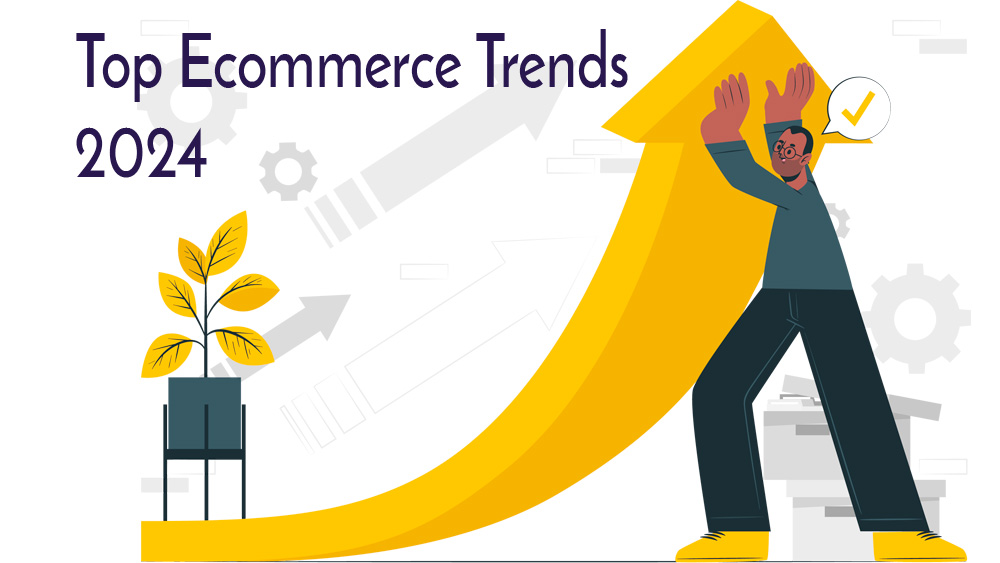Over time we expect things to change. This is even more true when it comes to ecommerce which must manage changes in technology, shopper practices, the legal climate, and more. In the ever-evolving landscape of ecommerce, staying ahead of the curve is paramount to success. As we delve into 2024, new trends and strategies emerge, reshaping the way businesses market their products online.
It’s our believe that 2024 packs an extreme amount of change that is upping the bar for what is required to be successful. From innovative technologies to shifting consumer behaviors, this article discusses the top ecommerce marketing trends of 2024 and provides insights to help you continue to grow in this dynamic environment.
AI-Powered Personalization
AI is dramatically changing many aspects to running an ecommerce business. You can use it to write content for your site, produce your marketing materials, run your chat, assist with strategy, and is going to quickly change the way shoppers search.
Artificial intelligence continues to revolutionize ecommerce marketing, particularly in the realm of personalization. In 2024, AI algorithms are becoming increasingly sophisticated, allowing businesses to deliver highly targeted and personalized shopping experiences. From product recommendations to tailored email campaigns, AI empowers marketers to connect with consumers on a deeper level, driving engagement and conversions.
I will warn you, AI is something you need to learn how to use as used incorrectly, it can do all sorts of harm. The good news is that tailored apps are entering the market that will make using AI for specific purposes easier. Many aps that improve your site merchandising already exist and are coming down in price so even smaller merchants can use it.
Voice Commerce Optimization
With the rising popularity of voice assistants such as Siri, Alexa, and Google Assistant, voice commerce is gaining momentum in 2024. However, the search engines themselves are incorporating voice search as well. This will necessitate a change to your SEO strategies.
Online stores have begun optimizing their platforms for voice search, ensuring that their products are easily discoverable through voice-enabled devices. Voice search optimization involves incorporating long-tail keywords, natural language processing, and conversational interfaces to enhance the user experience and capture a larger share of voice-driven sales.
 Social Commerce – Selling ON Social Media Platforms
Social Commerce – Selling ON Social Media Platforms
Social media platforms have evolved beyond mere communication tools to become powerful ecommerce channels in their own right. For several years, social media channels such as Facebook, Instagram, etc. have been primarily used to build trust, maintain relationships with your customers, and advertising.
In 2024, social commerce is taking center stage, with platforms like Instagram, Facebook, and TikTok offering seamless shopping experiences directly within their apps.
If you are not selling your consumer goods on social media you’re leaving major money on the table.
Social media companies have established stores and marketplaces on their platforms as a source of revenue. Nearly 60% of the world are using social media and, here in the U.S., people average 2-3 hours a day on social1. “Be where your customers are” is a basic tenant of marketing.
Ecommerce marketers are leveraging influencer partnerships, shoppable posts, and user-generated content to drive conversions and cultivate a loyal community of customers on social media.
Video Content Dominance
Yes, we know that video content requires some skills and can get pricey but it’s really no longer optional. Video content continues to reign supreme in the world of ecommerce marketing, captivating audiences and driving sales like never before.
In 2024, businesses are investing heavily in video production, creating engaging product demos, tutorials, and behind-the-scenes footage to connect with consumers on a more personal level. Most videos are short form – think 60-90 seconds.
Whether it’s live streaming on platforms like YouTube and Twitch or incorporating video into email campaigns and product pages, video content has become an indispensable tool for driving engagement and boosting conversion rates.
Note that video does NOT need to be a polished and professional experience. Shoppers are embracing authentic content. Use your influencers and your product reviews (if your review platform doesn’t offer and encourage video reviews, you’re missing out on free content) as a source of free or lower cost content.
Video can be informative, conversational, or even just plain fun. Video gives you a shot at adding personality to your brand which differentiates your shop from the beasts like Amazon and Temu. People prefer to buy from people, rather than anonymous companies.
Augmented Reality (AR) Shopping Experiences
It may still be a bit early in the AR realm for many online stores but don’t kid yourself, it is coming. Augmented reality technology is transforming the way consumers shop online, allowing them to visualize products in real-world settings before making a purchase.
You can see it in use on sites that sell flooring – “upload a photo to see this floor in your room.” AR is still pricey but is coming down and available in some format for most merchants over $1m+.
Less expensive AR includes apps that merchandise your collection pages based on shopper behavior. Many ecommerce search engines also are now using AI to improve results and user experience. There’s something out there for nearly any company.
In 2024, more ecommerce brands are integrating AR capabilities into their websites and mobile apps, enabling customers to try on virtual clothing, preview furniture in their homes, or see how makeup looks on their faces.
These immersive shopping experiences not only increase customer engagement, but also reduce returns by providing shoppers with a better sense of product fit and functionality. They might even reduce costly returns.
Sustainability and Ethical Branding
As environmental and social concerns continue to gain prominence, consumers are increasingly gravitating towards sustainable and ethically responsible brands. In 2024, ecommerce marketers are leveraging sustainability as a key differentiator, showcasing eco-friendly products and transparent supply chains to attract conscious consumers.
Efforts include recyclable packaging to carbon-neutral shipping options, brands are aligning their values with those of their target audience, fostering loyalty and goodwill in the process. If you do it, do it well as shoppers can spot the vague “a percentage of our profits go to …” as a half-hearted effort.
“Doing” Ecommerce has Gotten Harder
As we navigate the complex landscape of ecommerce marketing in 2024, one thing is clear: adaptability is key to success. Embracing the latest trends and technologies has become a requirement for businesses to position themselves for growth and forge meaningful connections with their target audience.
This has furthered the trend of raising the bar for new entry into the hugely competitive space that is ecommerce. From AI-powered personalization to immersive AR shopping experiences, the future of ecommerce marketing is bright with possibilities. Are you ready to seize them?
Need help bringing new marketing and merchandising up to speed? Reach out and see what we can do for your growth.
References:
1.https://www.aljazeera.com/news/2023/6/30/how-many-years-does-a-typical-user-spend-on-social-media






